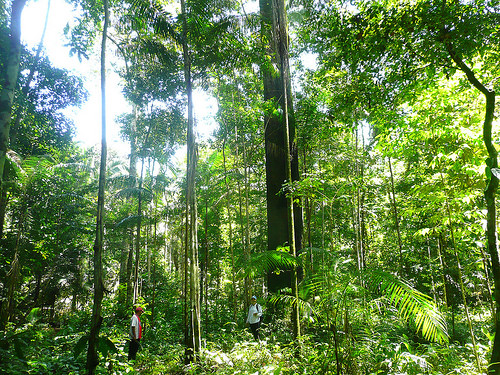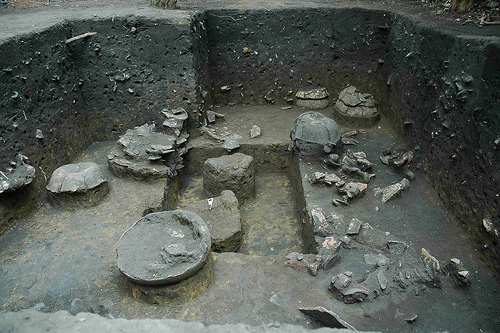
A new study shows that many trees we think of as indigenous to the Amazon Rainforest were planted there by ancient Amazonian farmers. [PHOTO: popular-archaeology.com]
We generally think of the Amazon Rainforest as this virgin swath of land in South America, wild and uninhabited and completely untouched by human intervention. That couldn’t be farther from the truth, according to a new field study conducted by a team of scientists led by Carolina Levis, a PhD student at Brazil’s National Institute for Amazonian Research and Nigel Pitman, the Mellon Senior Conservation Ecologist at Chicago’s Field Museum.
Using data from more than 1,000 forest surveys and a map of over 3,000 archaeological sites across the Amazon, Nigel Pitman and his team of researchers, ecologists, conservationists, and archaeologists compared the forest composition relating to the various archaeological sites. This overlay created a perfect picture of how pre-Colombian peoples in South America domesticated the rainforest and contributed to biodiversity within it.
“Some of the tree species that are abundant in Amazonian forests today, like cacao, açaí, and Brazil nut, are probably common because they were planted by people who lived there long before the arrival of European colonists,” said Nigel Pitman. “That’s even the case for some really remote, mature forests that we’d typically assumed to be pristine and undisturbed.”
Finally, credit is being given where credit is due for the vast wealth of natural resources and beautiful land hidden beneath the forest canopy.
“For many years, ecological studies ignored the influence of pre-Columbian peoples on the forests we see today. We found that a quarter of these domesticated tree species are widely distributed in the basin and dominate large expanses of forest. These species are vital for the livelihood and economy of Amazonian peoples and indicate that the Amazonian flora is in part a surviving heritage of its former inhabitants.” – Carolina Levis.
The study revealed areas in the Amazon that may have been a direct product of pre-Colombian cultivation, specifically, Southwestern Amazonia. This area had extremely high concentrations of Brazil nut trees, and these trees still produce nuts that are vital to the livelihood of native peoples.

PHOTO: popular-archaeology.com
The team is working as quickly as they can to piece together the information left behind by ancient peoples. They want to continue finding connections between archaeological sites and the local flora, in hopes of writing previously ignored history down, but there are many challenges to their work.
“The questions are pressing,” says Pitman, “since both types of pre-Columbian heritage–archeological sites and the forests that surround them–are at risk from road-building, mining, and other threats to the Amazon.”
Still, they continue. The story of the Amazon is a story worth telling.

